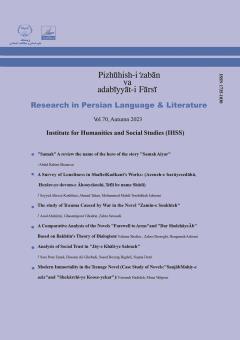For Muslim Gnostics, “Time” has special meanings, implications and features which indicate “passing-away of human nature and manifestation of the Divine”. It is the very “Time” or “Present Time” when spiritual experiences and intuition of interior Truths happens. The “P
More
For Muslim Gnostics, “Time” has special meanings, implications and features which indicate “passing-away of human nature and manifestation of the Divine”. It is the very “Time” or “Present Time” when spiritual experiences and intuition of interior Truths happens. The “Present Time” is between the past and future, but at the same time includes both. Accordingly, Sufi Time is going on in the present “Moment”, the moment having no temporal dimension; therefore, it goes on in a place which has no extensions. Hence, Sufi Time means to be “present” in a place and time free from the regulations of ordinary place and time. It has its own existential features and characteristics. The main objective of the present article is to explore what the sense, quality, quiddity, and ontological respects of Sufi Time are, and what spatial-temporal features it has; the features that, eventually, at the mind of a Sufi will develop the time and space (the Present Moment- world of Dominion) which “coincidence” of the past, the present and the future, a contradiction in terms, is one of its features that dominates all his existential aspects.
Regarding the research question, its history, and lack of related literature, the research method of the first part is descriptive-explanatory, and of the second part is descriptive-analytic. In doing so, we have relied on the views and terminology of mysticism so that we would unveil the meanings hidden in Iranian-Islamic mysticism and its rich culture.
Manuscript profile


